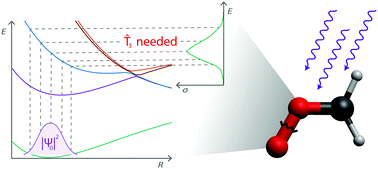UV absorption of Criegee intermediates: quantitative cross sections from high-level ab initio theory†
Abstract
Criegee intermediates (CIs) are increasingly recognized as important intermediates in atmospheric and combustion chemistry. Modelling in these fields requires reliable characterization of the CI's UV absorption cross sections. Different experimental approaches provided seemingly contradictory results both for the simplest CI as well as for higher analogues. To resolve these discrepancies, we model simultaneously the positions, widths, shapes and absolute intensities of the first absorption bands of CIs using the semiclassical reflection principle approach based on the path integral molecular dynamics. The UV spectra were efficiently processed via the kernel density estimation method. We show that the multireference character complicates the description of the system and the appropriate treatment of the electron correlation is vital. Multi-reference methods with dynamical correlation are problematic due to high sensitivity of the results with respect to the active space. Single-reference based methods become reliable once the triple excitations components are included. Interestingly, the very similar CC2 and ADC(2) methods provide highly conflicting results which are, however, reconciled at the CC3 and ADC(3) levels. To calculate the spectra of higher CIs, we introduce composite EOM-CCSD/T and CC2/3 methods providing excellent absorption cross sections at an acceptable computational cost. We provide the first absolute intensities for individual conformers of the CH3CHOO molecule.



 Please wait while we load your content...
Please wait while we load your content...